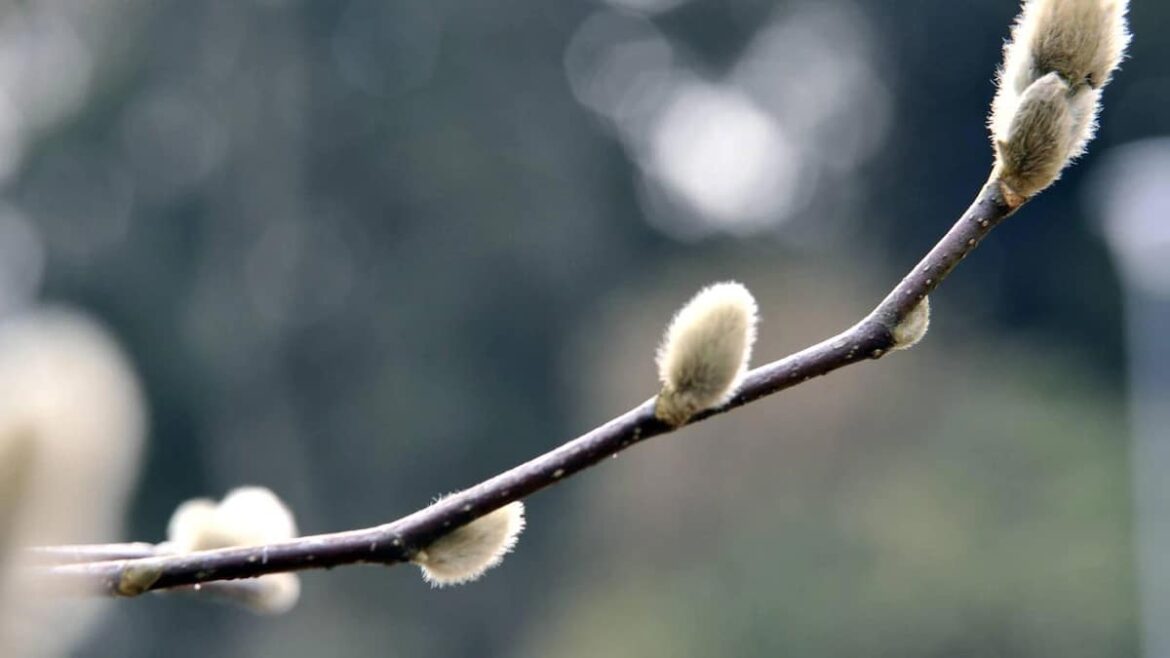1.2K
They are soft, fluffy and decorative: willow catkins decorate the branches of the willow as a blossom in spring. Find out what you need to know about the tree’s blossom in this article.
Willow flower: Popular with humans and bees
Who doesn’t know them? The fluffy grey catkins that hang from the willow branches even before the leaves shoot.
- These are usually the velvety inflorescences of Sal willow (Salix caprea), grey willow (Salix cinerea) or hoary willow (Salix daphnoides).
- Each willow tree bears only male or only female flowers. After flowering, you can recognise the male catkins by their yellow stamens. The female catkins are inconspicuously green in colour.
- Willow catkins are not only popular with people, but also with bees and other insects. The creatures literally fly to the flowering willow catkins. Their nectar is an important food source for bees & Co.
- The bees first fly to the yellow, male catkins. Only after they have satiated themselves on the nectar there do they continue – with the male pollen in their luggage – to the female catkins. This ensures pollination.
- In most German states, it is therefore not permitted to cut catkin branches for the vase in the wild. You should rather buy the so-called decorative twig in a flower shop.
The willow tree at a glance
- Willow species: There are 30 to 40 species of willow in Europe. Among the best known and most beautiful in this country is the weeping willow with its long, drooping branches
- Characteristics: The willow occurs as a shrub or as a tree up to 20 metres high.
- Location: Willows prefer moist locations. Therefore, the trees or shrubs are mainly found along rivers, banks or in floodplain forests. In the Alps, willows occur on rocky debris and stony grassland.
The pasture and the hay fever
In the spring, flowers are everywhere and trees and shrubs send their pollen into the air. Classic allergenic trees are birch or hazelnut. But what about the willow?
- Willows have a weak allergy level.
- They rarely cause allergies because they are insect-flowered. This means that only a few pollen fly in the air. Locally, however, there may be higher amounts of pollen. Caution: Willow twigs indoors can definitely trigger hay fever.
- Willows flower from the beginning of February to the end of June. However, peak season is from mid-March to early May.
- Cross-reactions within the different willow species and with poplar pollen are also possible.
- Willow is also used pharmaceutically: Preparations from willow bark help with mild, febrile colds, pain, inflammatory diseases of the musculoskeletal system. But: The pharmaceutical products may only be used on adults and not on children.
